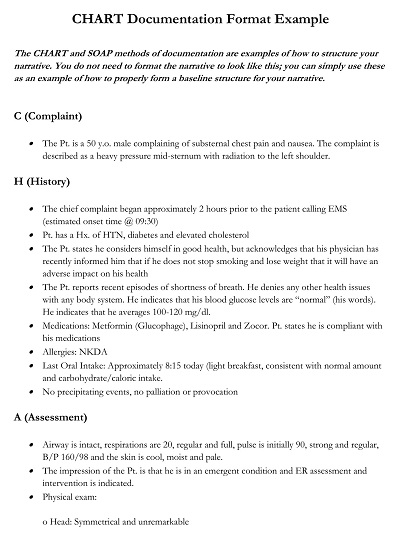15+ Free Ems Narrative Templates – Printable PDF Charts
Using an Ems narrative template can be a useful tool for EMS personnel when creating incident reports. It provides a structure and commonly used language that will make sure all necessary information is included. Additionally, this type of template often contains space to add additional notes and observations, which can help keep the report concise and organized.
Table of Contents
An Ems narrative template helps to present a clear story of events in an understandable format, making it easier for incident reviews or other staff to understand the full range of activities that took place at the scene. EMS providers need to be able to provide detailed and well-documented accounts of their work, and templates such as those provided by Ems are key in helping them do so.
Download Free Ems Narrative Templates
Purpose of an EMS Narrative
An EMS narrative serves as an important record of the events surrounding a medical situation, providing crucial details to not just healthcare providers, but also investigators and prosecutors. It allows for a review of the patient’s condition before and after care, helping first responders plan for future incidents. Recording what happened at the scene and in transit, allows providers to document any changes that happened due to pre-hospital care and adjust their treatments to ensure better outcomes.
Additionally, any disputes between providers can be more easily resolved with accurate EMS narratives available to review. From different types of trauma to medical interventions carried out successfully or unsuccessfully all the information becomes vital when forming judgments on response time, care quality, and level of professionalism during the incident.
Role of EMS Narratives in Patient Care
Emergency medical services (EMS) narratives can be powerful tools in patient care. By sharing their experiences, EMS providers can help ensure that their patients receive the best possible care. Through these narratives, they can inform other members of the healthcare team about any non-standard interventions that may have been necessary during a call.
These stories also help to build relationships between the providers and patients or their family members, allowing for better communication throughout treatment. Furthermore, these tangible accounts can give insight into what exact circumstances led to an individual’s injury or illness information which could lead to better outcomes in similar cases. Therefore, EMS narratives serve as invaluable resources in patient care and should be used whenever possible.
Components of an EMS Narrative
An Emergency Medical Services (EMS) narrative provides an extremely important service to people in need of medical attention. These narratives are composed of several critical components that support the provider’s decisions and clinical judgment. Each narrative should include information about the mechanism of injury, patient presentation, vital signs, medical interventions and assessment, communications, observations, and treatment that was provided on scene.
Additionally, narratives should also note the outcome of the situation or patient disposition. All information provided in an EMS narrative is essential in helping care providers to better assist their patients and should be made clear and accurate to ensure proper treatment is provided.
Importance of Consistent and Clear EMS Documentation
EMS documentation is an incredibly important part of providing medical care. Clear and consistent documentation allows healthcare practitioners to easily share patient information with other providers, track trends in treatments over time, and ensure that accurate records are kept for legal proceedings. Effective documentation also reduces the need for expensive testing or unwarranted treatments, as it not only provides valuable insight into the patient’s history but can also help identify alternative treatment plans.
Lastly, documented information offers a level of safety and assurance to both patients and providers when serious medical decisions are being made. For these reasons, all EMS personnel must remain diligent in documenting all patient encounters clearly and consistently, it is a matter of health and safety.
Crafting a Winning EMS Narrative Template
If you’re in the business of providing emergency medical services, then you know how important it is to have an effective narrative template. A narrative template allows you to quickly and accurately document incidents, treatments, and other pertinent facts so that your team can be prepared for any situation. Here is how to create an EMS narrative template that is both comprehensive and easy to use.
Start with a Standard Framework
The best way to begin creating your narrative template is by starting with a standard framework. This framework should include elements such as patient information, medical history, symptoms, diagnosis/treatment, medications administered, follow-up plans, and more. By using a standard framework as the basis for your template, you can ensure that all necessary information is included and make the process of creating your narrative easier.
Customize with Relevant Information
Once you have a standard framework in place, you can customize it with relevant information for each incident or case. For example, if you are seeing a patient with asthma, add additional information about their breathing rate or peak expiratory flow rate (PEFR). Or if you are dealing with an unconscious patient who needs intubation or ventilation support, note this in the template as well so that it can be documented properly. Including these details will help ensure that all pertinent information is captured and documented accurately while also allowing for easy retrieval of data when needed.
Make Your Template Easy to Use
Finally, make sure that your EMS narrative template is user-friendly and easy to use by everyone on your team. Keep it simple so that anyone can quickly fill out the form without having to spend too much time deciphering complicated language or formatting requirements. Additionally, consider utilizing drop-down menus or other automated functions so that users don’t have to manually enter data every time they use the form this will save time and reduce errors caused by typos or misreading of entries.











